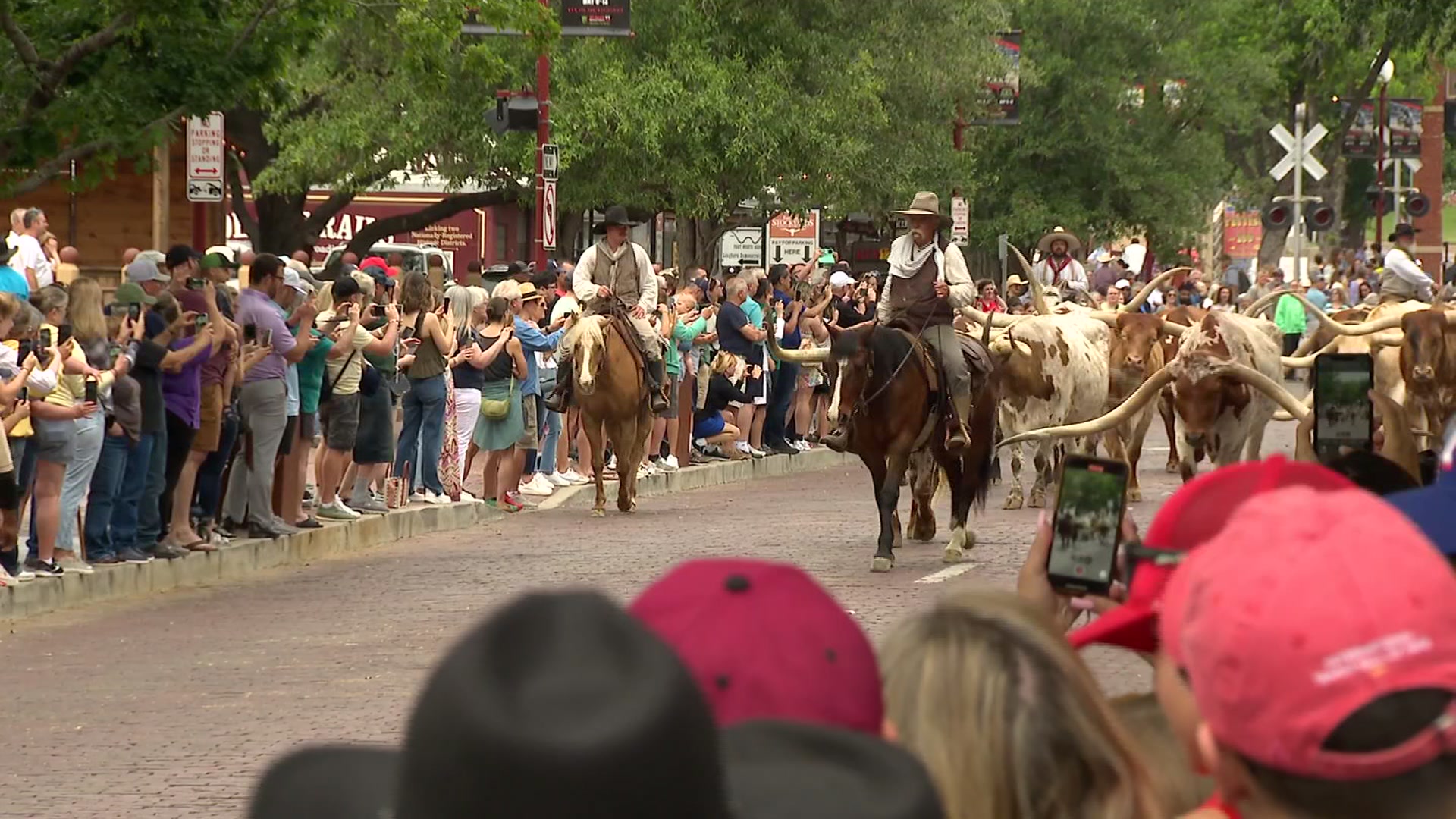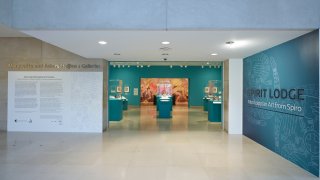
There is a chapter missing in American history books and the Dallas Museum of Art is writing it with art from the overlooked Mississippian culture. Spirit Lodge: Mississippian Art from Spiro, now on view through August 7, explores this sophisticated society and its legacy through the objects it left behind at one of its most sacred sites and the contemporary art it inspired.
“This exhibition is big, and it weaves together multiple narratives,” said Dr. Michelle Rich, The Ellen and Harry S. Parker III Assistant Curator of the Arts of the Americas at the museum.
A Native American culture that existed over 1000 years ago, the Mississippian civilization populated the Mississippi River Valley, extending from what is now the Midwestern, Eastern, and Southeastern parts of the United States. With its trade networks and highly developed communities, the society flourished from 800 CE to 1600 CE, equaling the advancement of Aztec, Maya, and Inca societies.
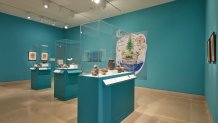
Get DFW local news, weather forecasts and entertainment stories to your inbox. Sign up for NBC DFW newsletters.
The exhibition featuring nearly 200 objects focuses on the archeology and history of Spiro, a site in Oklahoma. It begins by introducing the Mississippian culture and religious worldview.
“What we have here in this room is a sprinkling of objects that represent the entire Mississippian world,” Rich said.
A large graphic explains the Mississippian cosmology. The belief system was a three-layered universe with Above, Middle and Below worlds. These worlds were connected by a shaft called the Tree of Life or the axis mundi. With supernatural beings such as Morning Star, Evening Star and the Hero Twins, the Mississippian people explained the creation of the world and the natural phenomenon they observed every day, such as the rising and the setting of the sun.
The Scene
“All of the supernaturals you see depicted in this painting are depicted here in the exhibition,” said F. Kent Reilly, Director of the Center for the Study of Arts and Symbolism of Ancient America at Texas State University. “And the vessels that they are on were probably used in rituals that were unique to those individuals in the belief system.”
During the Little Ice Age around 1400 CE, the Mississippian people experienced extreme drought.
“Their way of life and their world was essentially drastically changing,” Rich said. “And they were trying to cope with that change in the best and most effective way they knew how, and that was through ritual activity, through deferring to ritual leaders to set the world right.”
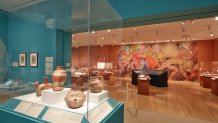
The Spiroan people built Spirit Lodge, a large hollow chamber in an earthen mound called Craig Mound, and amassed sacred objects from around the Mississippian world.
“All of these objects here were part of the ritual that was conducted in the Spirit Lodge, and we understand that ritual to be connected to the environmental crisis that the Spiro people, the Mississippian people were experiencing during the 1400s,” Rich said.
The objects depicting the supernatural figures of their cosmology included embossed copper plates, wooden sculptures, thousands of pearls and beads, large human effigy pipes, and as many as 700 shell cups.
“Just imagine the scale of the number of objects, the scale of the ceremony conducted in that space, and how much it meant to the people gathered there," Rich said. "We believe people from across the Mississippian world came to Spiro to reset the clock."
As many objects as there are on display, much of Spirit Lodge remains a mystery because of extensive looting in the 1930s.
“While we see these beautiful objects, we don’t know what else we’re not seeing, Rich said. "We don’t know what was taken and that we will never be able to identify."
In 1933, the site’s owners allowed Pocola Mining Company to excavate Craig Mound, unearthing the treasures of Spirit Lodge. At the time, the Kansas City Star called the discovery a "King Tut's Tomb in Arkansas Valley," but the excavation was destructive.
“They were rotten,” said Dr. Eric Singleton, Curator of Ethnology at the National Cowboy and Western Heritage Museum in Oklahoma. “They systemically looted and destroyed this entire thing over about a two-year period.”
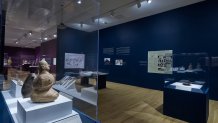
Treasure hunters sold anything considered valuable. Many of the objects were sold to museums and private collectors around the world. This exhibition reunites these objects for the first time since the 1930s and documents the looting.
“One of the things the looters did was to scatter the objects and destroy the objects they didn’t see value in so we’re talking about a lot of organics, the basketry, textiles," Rich said. "Cedar poles that were used to create the hollow chamber were burned for firewood at the site."
The exhibition concludes with a collection of contemporary art, connecting past and present.
“The works in here are all made by contemporary indigenous artists who are descendants of Mississippian peoples,” Rich said.
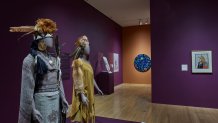
The contemporary artists honor and reimagine their ancestor’s artistic practices, adding to a history that deserves to be celebrated.
“What you see around you is the survival of a glorious past, an American past,” Reilly said.
Learn more: https://dma.org/art/exhibitions/spirit-lodge-mississippian-art-spiro

